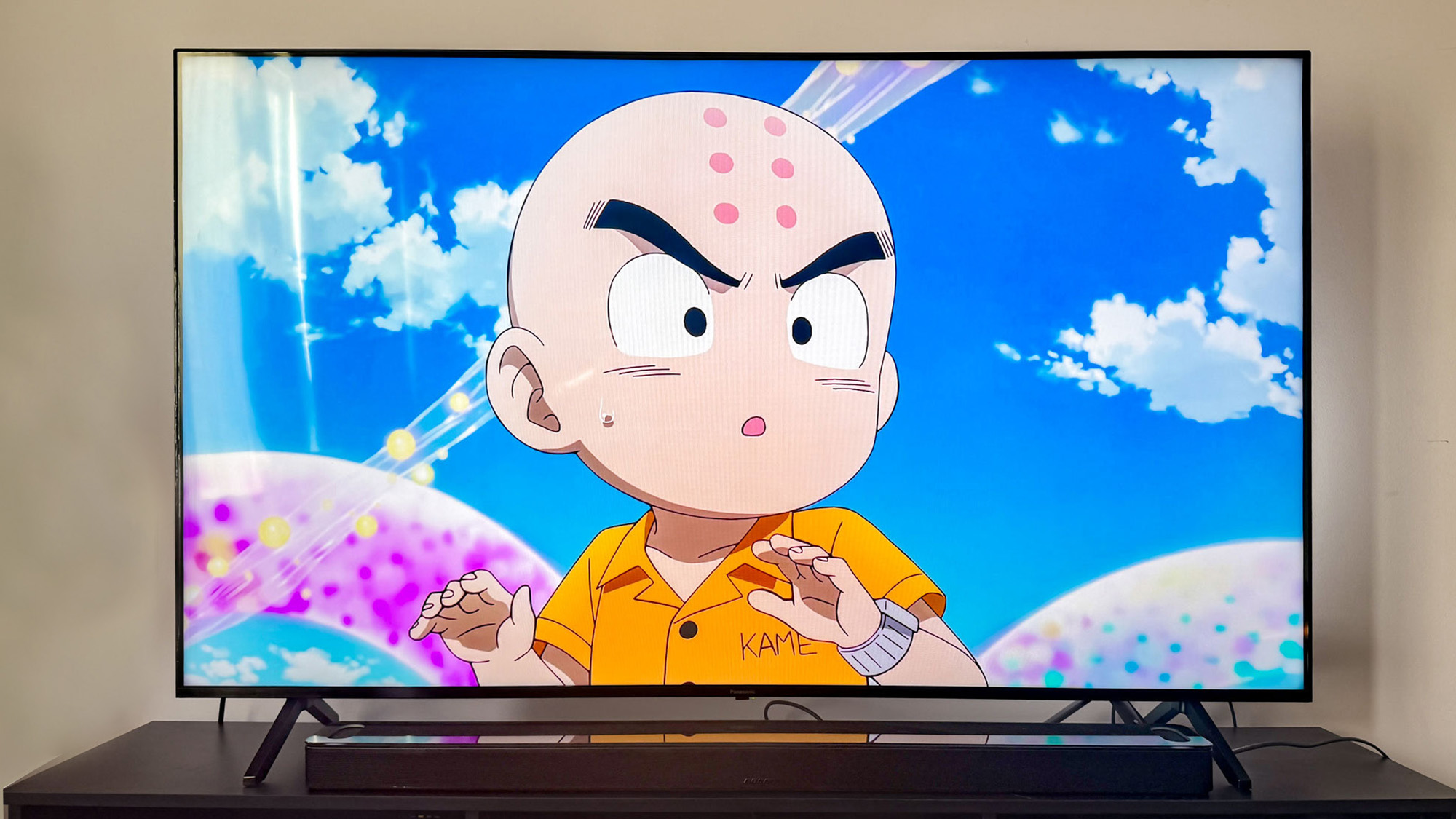
Panasonic is set to re-energize the TV market with a set of truly breathtaking TVs, and its new Mini-LED offering is a shining accomplishment of its continued success. Known for years of delivering quality plasma screens, Panasonic is turning to Mini-LEDs and expert backlighting with its W95A — and it doesn’t disappoint.
The Panasonic W95A Mini-LED TV delivers high-end specs at a less intimidating price point. A 144Hz refresh rate and dedicated Game Bar are ideal additions for gamers and its 50W speaker system is something that will make even some of the best soundbars wince. It even comes equipped with an ATSC 3.0 tuner, unlike some other 2024 top-of-the-line models like the LG G4 OLED and Samsung S95D OLED.
At $1,299, it’s not exactly the most budget play in the LCD market — see the $799 Hisense U8N — but with a laundry list of upsides against the competition the W95A makes a case for itself as a competent new contender on the block led by one of the best TV manufacturers in the market. Let’s see how far Panasonic’s new gambit in Mini-LED TVs truly pays off.
Panasonic W95A OLED TV review: Price and release date
The Panasonic W95A Mini-LED TV launched on September 18 in tandem with the Panasonic Z95A and Z85A OLED TVs. Unlike some of the best OLED TVs, the Panasonic W95A is available in a range of sizes starting at 55-inch and going all the way up to 85-inch.
- 55-inch Panasonic W95A Mini-LED TV (55W95AP): $1,299
- 65-inch Panasonic W95A Mini-LED TV (65W95AP): $1,799
- 75-inch Panasonic W95A Mini-LED TV (75W95AP): $2,299
- 85-inch Panasonic W95A Mini-LED TV (85W95AP): $2,999
For our review, we tested the 65-inch version, and we expect to see similar performance across screen sizes. The 75-inch and 85-inch models will have more dimming zones, while the 55-inch model will have fewer, which will impact overall brightness and contrast. The 65-inch version likely falls somewhere in the middle in terms of dimming zones, but that’s not something Panasonic discloses publicly. Not sure which size is right for your living room? Check out our ‘What size TV should I buy?’ guide.
As far as Mini-LED TVs go, its starting price isn’t too much to gawk at. There are cheaper options on the market, case in point being the $900 Roku Pro Series TV — though you’ll be missing out on the W95A’s 144Hz refresh rate.
Panasonic W95A Mini-LED TV review: Design
Like most Mini-LED models, the Panasonic W95A is built on an LCD VA panel that uses small LEDs and local dimming to bring quality cinematic performance. It features a native refresh rate of 144Hz and runs on the HCX Pro AI processor MKII. Interestingly, this is the same chip powering its mighty Z95A OLED TV, one of the best TVs of the year.
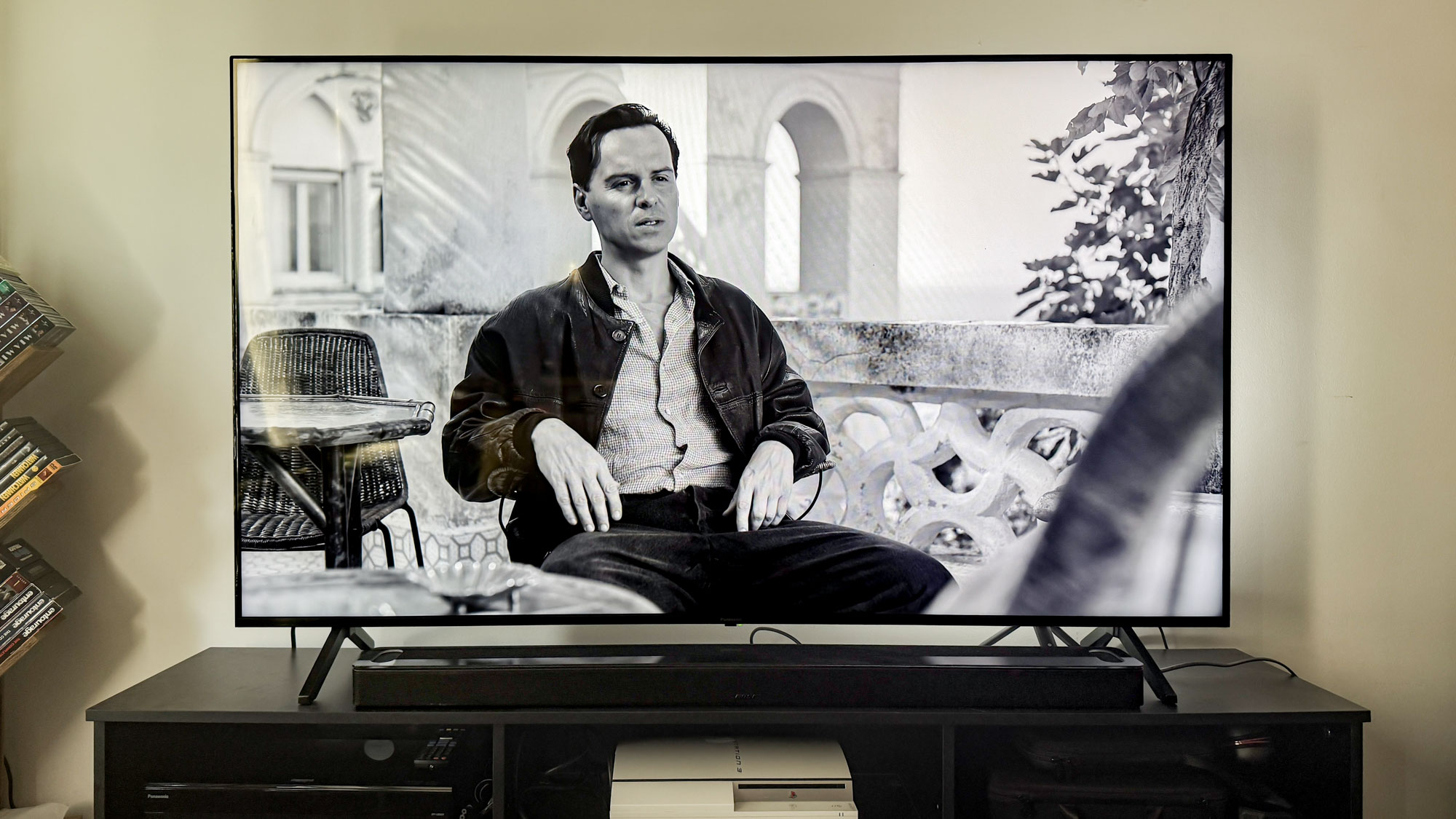
The new Mini-LED isn’t exactly bezel-less, though it does have an incredibly slim design. This makes it easy to set up and move about your place even on its 65-inch configuration. It weighs about 40 pounds, which sounds like a lot but is light compared to Samsung’s Q80C, which was almost over 60 pounds.
The W95A doesn’t have the same swivel stand that its OLED counterpart came with, but it does have easy-to-assemble legs and a VESA mount compatibility with 400 x 300 mm sizes. It uses Fire TV as its smart OS, which is a bummer for those who prefer Google TV or Roku.
Panasonic W95A Mini-LED TV review: Ports
When it comes to ports, there’s little Panasonic left on the table. It comes with two USB ports (one of them USB 3.0 and another 2.0), four HDMI ports (only two of which are HDMI 2.1) and even an ATSC 3.0 tuner for those looking to enjoy 4K broadcasts. An optical digital output and headphone output gives you a bit of leeway for sound coverage, even if its base 50W speaker is pretty sufficient for its price point.
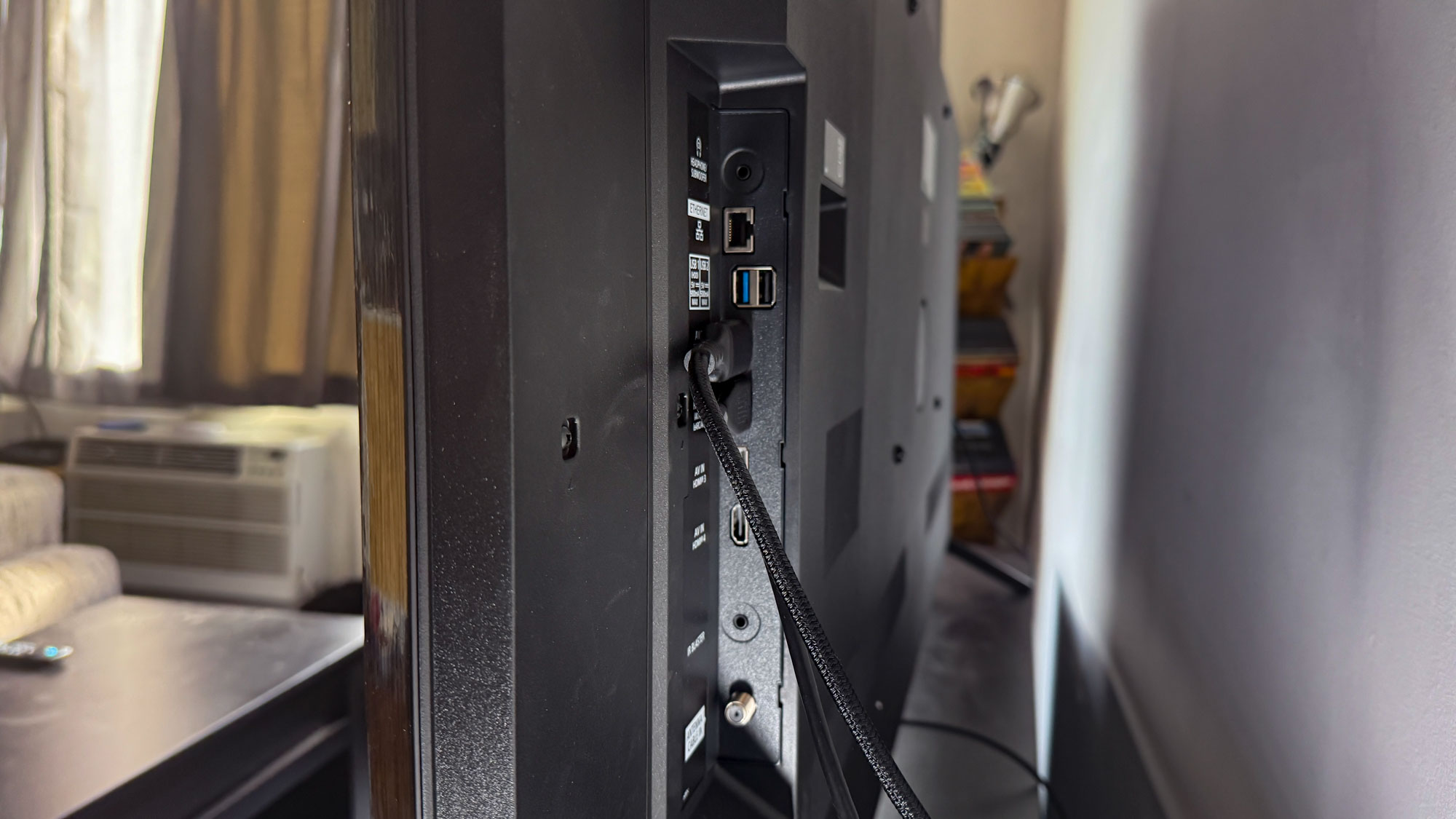
The Panasonic W95A also has bluetooth compatibility and Wi-Fi 6e for superior network coverage. With its FIre TV capabilities, you also have access to Alexa support, making it extremely easy to change settings or switch to your favorite film without even lifting a finger.
Panasonic W95A Mini-LED TV review: Performance
I watched a ton of varied content: HDR films, colorful anime, and content across Netflix, Disney Plus, and Crunchyroll. I even played some 4K Blu-ray movies using a Panasonic DP-U8820.
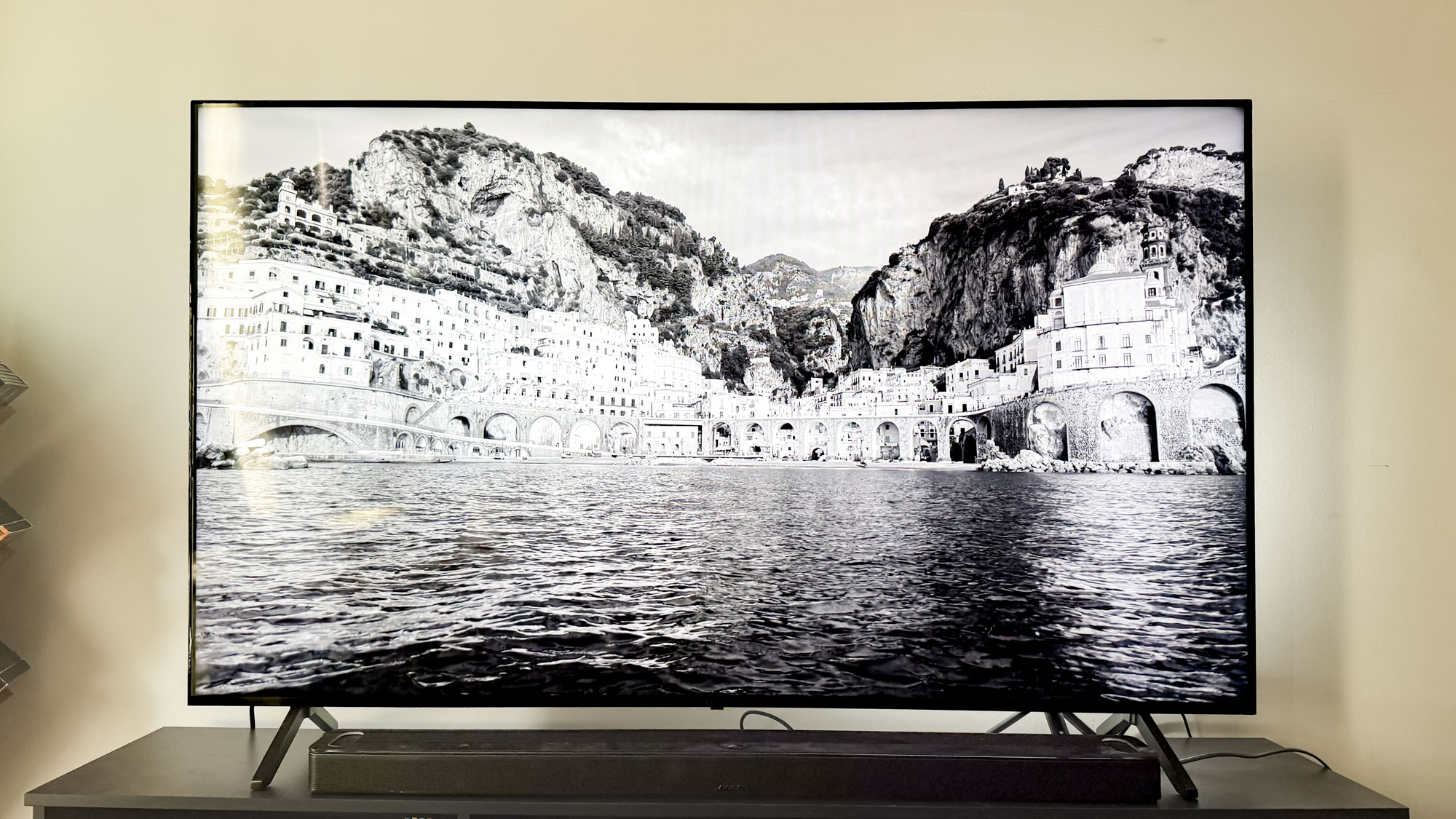
While watching the black and white anime “Uzumaki” and French noir hit “Le Samourai,” I noticed the W95A didn’t handle dark scenes very well. This extended to various episodes of “The Penguin” on Max, which looked serviceable, but given the steeped-in-night world of Gotham city, immersion is at its highest when watching this show on one of the best OLED TVs.
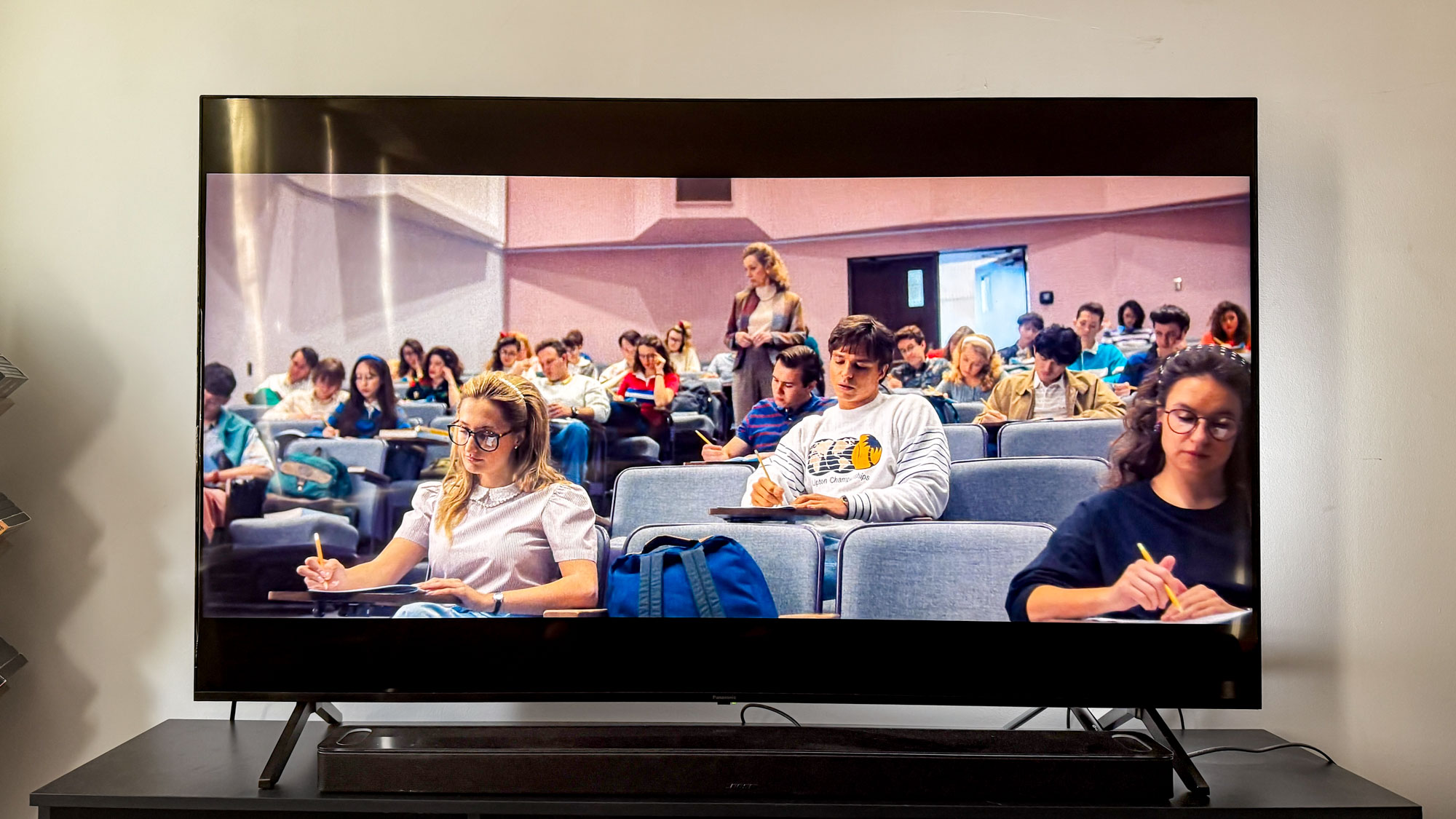
With an impressively low color accuracy score, or Delta-E, of 1.5775, the W95A is a reliable pick for people who care about reference accuracy.. It covers 99.9% of the standard Rec.709 color gamut, which means bright, colorful anime like “Frieren: Beyond Journey’s End” or “Mob Psycho 100” will look particularly stunning on this display.
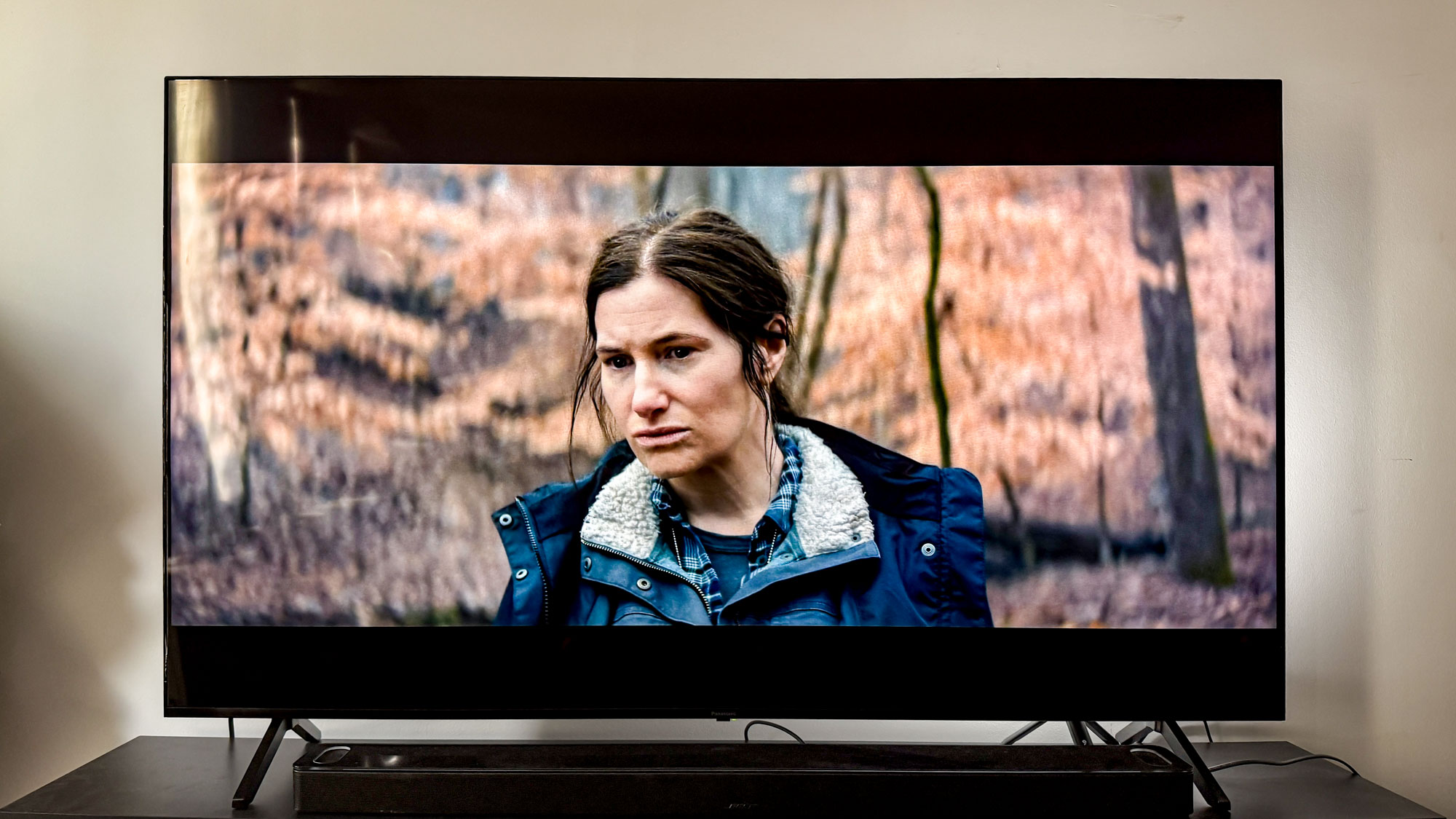
While watching 4K Blu-rays of “Tenet” and “The Fighter” I found myself impressed by the motion processing on the W95A. Fast-paced action sequences in “Tenet,” like the big plutonium heist scene and climax, looked well-rounded with minimal artifacting or stuttering. HDR is quite gorgeous, as well, with an HDR brightness that doesn’t quite reach Hisense levels, but beats many others in its price range.
Panasonic W95A Mini-LED TV: How we test
We follow a standard testing protocol for every TV we review at Tom’s Guide. Our benchmarks include a series of technical and subject tests designed to rate the set’s performance. For our technical tests, we use a Jeti spectraval 1501-HiRes spectroradiometer, a Klein K10-A colorimeter, a Murideo 8K-SIX-G Metal pattern generator, and Portrait Displays’ Calman TV-calibration software to take measurements. We also use a Leo Bodnar 4K Input Lag Tester for determining the TV’s gaming prowess.
Subjective tests vary based on the reviewer, but usually feature anecdotes from a diverse selection of movies, TV shows, and other content reflecting the types of things you may actually want to watch on the TV. For a more detailed look at what we do and how we do it, check out our “How we test TVs” page.
Panasonic W95A Mini-LED TV: Test results
Panasonic is back and it’s bringing some serious competition with its new OLED TV. We put the W95A OLED up to the test against the market’s best Mini-LED offerings in the Roku Pro Series, Hisense U8N, and Samsung Q80D.
It’s hard to go up against the Hisense U8N and come out on top, as it’s got some pretty remarkable brightness specs at an unbeatable price. However, the Panasonic W95A gives the U8N a run for its money. Input latency is at the highest on Panasonic’s new Mini-LED TV, which isn’t ideal, but it does have some incredible color accuracy with one of the lowest Delta-E ratings in its class. It’s also got spectacular brightness for its price range.
Panasonic W95A Mini-LED TV review: Audio
Despite having one of the largest wattage outputs on a budget Mini-LED TV, the Panasonic W95A speaker leaves much to be desired. The audio isn’t terrible by any means, it just could be better. This is why we always recommend nabbing an improved sound system for your display, especially one among the best Dolby Atmos soundbars.
At 2.1 and 50W, the W95A’s audio shouldn’t be as much of a let down as it is. Hisense’s U8N uses a similar speaker configuration that’s actually got an extra 2.1.2 surround sound channel to it for added oomph. The W95A also is nowhere near as powerful as the Panasonic Z95A and its 160W speaker system — that’s totally in a league of its own.
Panasonic W95A Mini-LED TV review: Interface and apps
The biggest let-down for Panasonic’s new lineup is its reliance on the Fire TV platform. It’s not exactly the most intuitive system and its layout leaves a lot to be desired when it comes to the overall user experience. Fire TV has been in the game for quite some time, so you’d think it would have redesigned its user interface to better accommodate users more accustomed to Samsung’s Tizen, Roku, or even Google TV, all of which are simply much better to use and navigate.
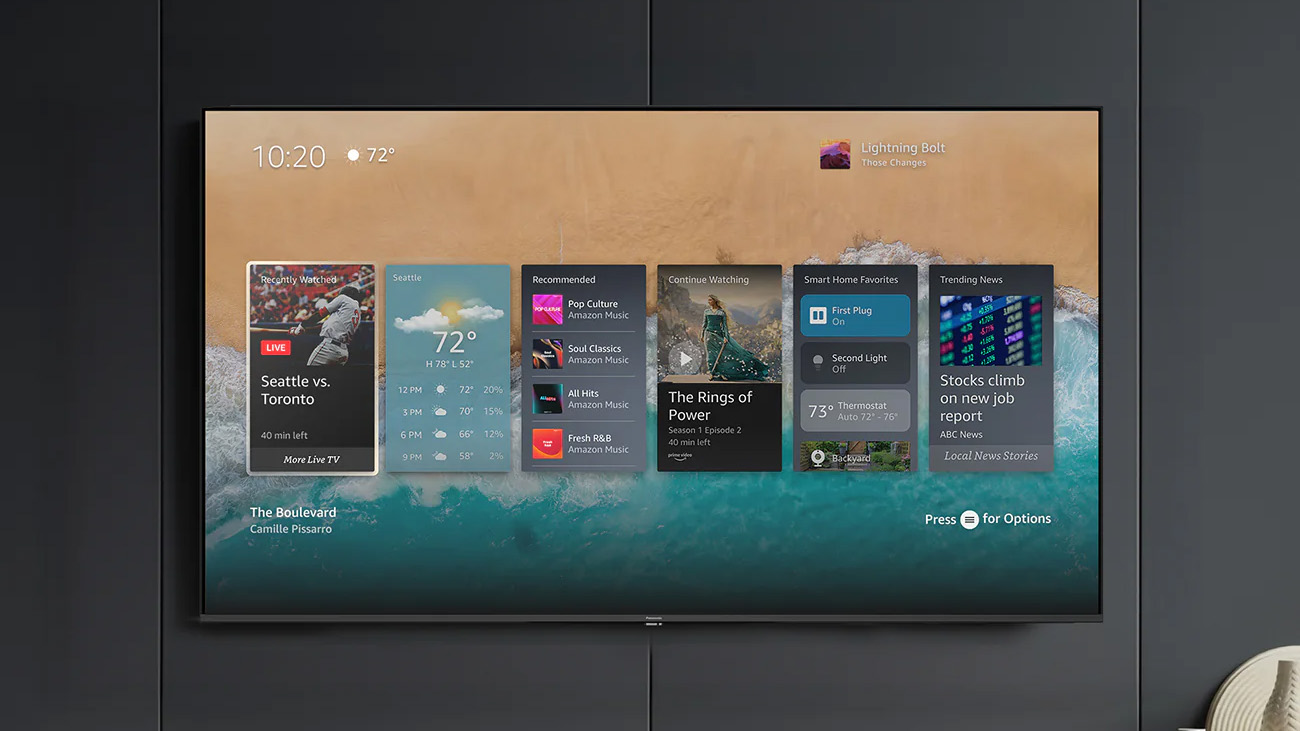
This is more of a personal preference though and your experience will vary. Some users enjoy Fire TV over others, so maybe you’re in the minority. Still, the way Fire TV is set up, with just six apps at the top carousel and a laundry list of baked-in Amazon ads, you’re left wishing for a more streamlined service — and that doesn’t even mention the annoying auto-play function that kicks in moments after you turn the TV on.
Panasonic W95A mini-LED TV review: Remote
I ran into a major problem with the Panasonic W95A’s remote on startup. For some reason, it wouldn’t function properly at first, requiring me to fully reset the TV to factory settings. Of course, this could be a simple beta glitch or potentially a Fire TV issue, but it was there and hampered the experience — at least on initial start up.
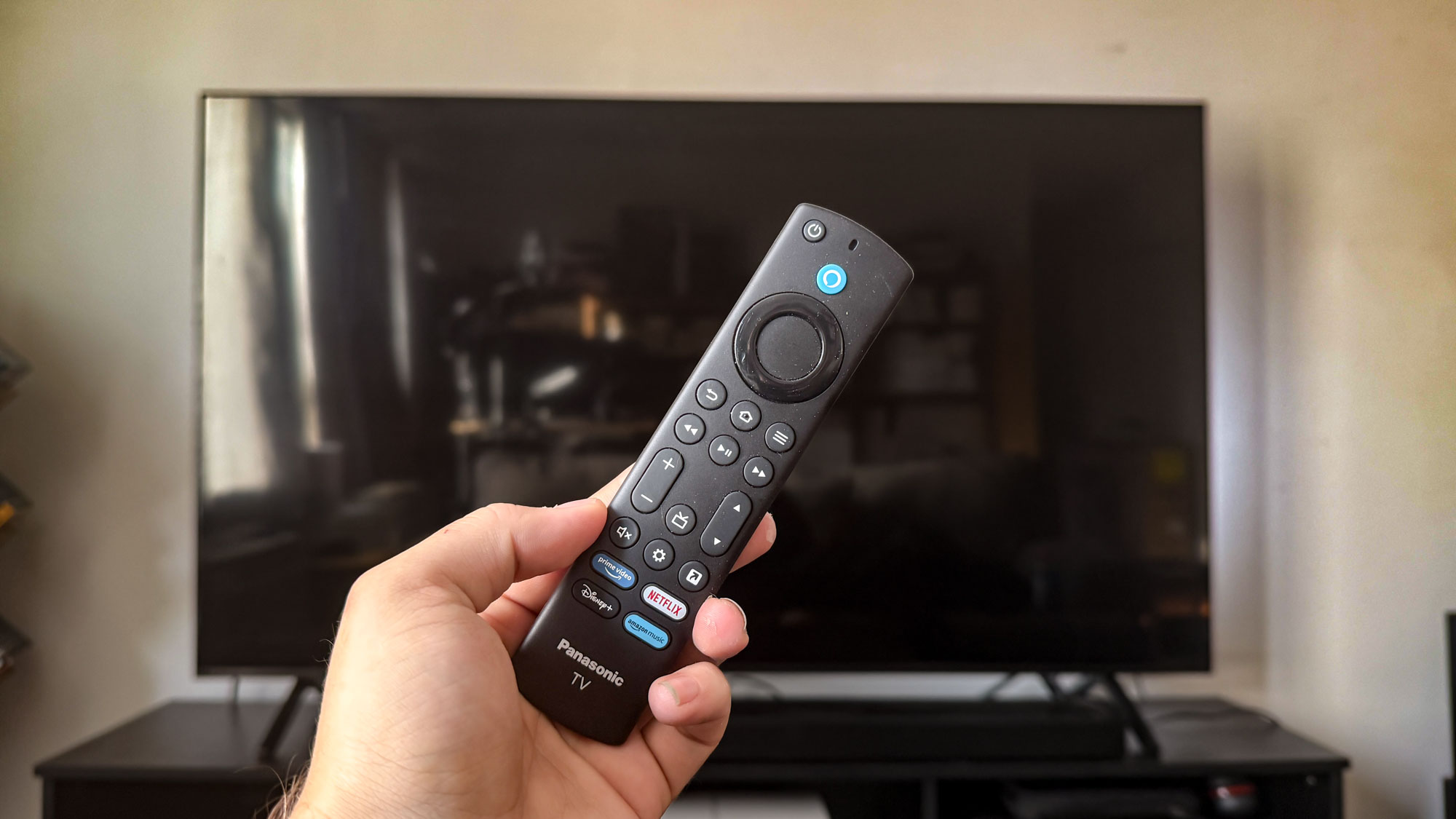
Aside from that, though, there’s little really to complain about in regards to the remote. It works as intended and is on the smaller side, how I like it against LG’s bulkier, wand-like designs. That being said, it would be nice if alternative brands followed suit from the likes of Roku and Samsung. The former’s Voice Remote Pro not only has backlit buttons but also comes equipped with USB-C charging and the latter has a handy solar-powered function.
Panasonic W95A Mini-LED TV review: Verdict
Panasonic is back and it’s not backing down. The launch of its Z95A is a testament to its bold thinking in a world where major innovation is largely nonexistent. Although its new Mini-LED TV isn’t on the same level of its flagship in terms of design, it makes up for it with performance that meets its pricing.
Can you find a better TV in its price bracket? Most certainly. The Hisense U8N, by all accounts, is a superior Mini-LED TV (see our Panasonic W95A vs Hisense U8N face-off for the full details). Beyond just poor black levels, somewhat middling sound system, and high input latency, one of the biggest pain points holding the W95A back is its reliance on Fire TV as its main operating system, which isn’t super user friendly.
If you can look past its minimal drawbacks, the W95A delivers wide viewing angles and great HDR performance, making it a great alternative to the 2024 Mini-LEDs we’ve seen from Samsung and LG.







